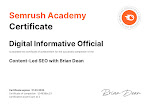How to Start Writing an Email
How to Start Writing an Email
In today's digital age, email has become one of the most common forms of communication in both personal and professional settings. Whether you're reaching out to a colleague, a potential client, or a friend, knowing how to write an effective email is essential. So, how do you start crafting an email that gets your message across clearly and effectively? Let's break it down into simple steps.
Understanding the Purpose
Before you even begin typing, take a moment to consider why you're writing the email. Are you following up on a previous conversation? Introducing yourself to a new contact?
Clarifying information or requesting assistance?
Understanding the purpose of your email will help you stay focused and ensure that your message is relevant to the recipient.
Audience Analysis
Next, think about who will be reading your email. Put yourself in their shoes and consider their perspective. What are their interests, concerns, and priorities?
Tailoring your tone and content to suit the recipient will make your email more engaging and increase the likelihood of a positive response.
Structuring the Email
A well-structured email is easier to read and more likely to elicit the desired response. Start with a brief introduction to set the context, followed by the main body of the email, where you provide the necessary information or make your request. Finally, conclude with a summary and any closing remarks or next steps.
Crafting the Subject Line
The subject line is the first thing your recipient will see, so make it count. Keep it short and to the point, while still conveying the purpose of your email.
A compelling subject line can increase the chances of your email being opened and read.
Writing the Email Content
When it comes to the content of your email, clarity is key. Use simple, straightforward language and avoid unnecessary jargon or technical terms.
Be concise but thorough, providing all the information your recipient needs without overwhelming them with unnecessary details.
Formatting and Layout
Break up your email into short paragraphs and use bullet points or numbered lists to highlight key points. This makes your email easier to read and helps draw attention to important information.
Use formatting tools like bold or italic text sparingly, focusing on clarity rather than decoration.
Polishing and Proofreading
Before hitting send, take a moment to review your email for spelling and grammar errors. Read it aloud to yourself or ask a colleague to proofread it for you.
Pay attention to the overall clarity and coherence of your message, making any necessary revisions to ensure that your email is clear and professional.
Adding Personal Touches
Adding a personal touch to your email can help to establish a connection with the recipient. Address them by name, if possible, and consider including relevant details or references that show you've done your homework. This demonstrates that you value their time and attention.
Finalizing and Sending
Once you're satisfied with your email, double-check all the details to make sure everything is correct. Then, hit send with confidence, knowing that you've crafted a clear and professional message that is likely to resonate with your recipient.
Conclusion
Writing an email may seem like a daunting task, but by following these simple steps, you can start crafting emails that are clear, concise, and effective.
Whether you're communicating with colleagues, clients, or friends, mastering the art of email writing is an invaluable skill that will serve you well in all aspects of your life.
FAQs
- How long should my email be?
- Aim for brevity, but include all necessary information to avoid confusion.
- Should I use emojis in my professional emails?
- It depends on the context and your relationship with the recipient. In formal settings, it's best to err on the side of caution and stick to plain text.
- Is it necessary to include a signature in every email?
- Including a signature with your name, title, and contact information adds a professional touch to your emails and makes it easier for recipients to follow up if needed.
- What should I do if I don't receive a response to my email?
- Give the recipient a few days to respond, and if you still haven't heard back, consider sending a polite follow-up email to check-in.
- How can I avoid my emails ending up in the recipient's spam folder?
- Avoid using spammy language or excessive punctuation in your subject line and content. Additionally, ensure that your email address is reputable and that you have permission to email the recipient.






















Post a Comment